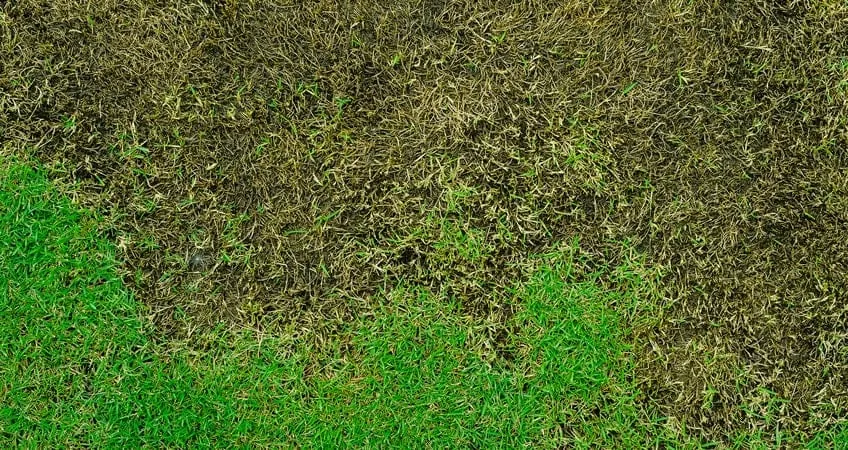When to Apply Fungicide to Your Lawn
As summer approaches, spending time outside on your lawn is probably a given. No matter how well you take care of your lawn, diseases can strike and leave their marks. Depending on the disease and how quickly you catch its spread, a fungicide can clear up issues in one or two treatments. Here we explain how to spot the signs your lawn needs fungicide, when to apply it and more.
How To Know When Fungicide is the Right Treatment Option

The key to treating lawn diseases is to have an accurate and precise diagnosis. Without knowing exactly what you’re dealing with, it’s hard to say which option will work best or if it will even be an effective solution. For example, large patch disease in warm-season lawns can require a combination of fungicide treatments and improved lawn care practices for successful control.
We recommend contacting our professionals, who are capable of diagnosing and implementing treatments promptly.
When To Apply Fungicide
For best results, you should apply fungicide as soon as the disease is diagnosed. For a more preventative approach, applying fungicide throughout the summer months (or when nightly temperatures rise above 60 degrees) can play a key role in the ongoing health of your lawn. Depending on the severity of the problem, these treatments can last anywhere between two to three weeks. In the cases of active and persistent lawn diseases, our professionals may recommend weekly treatments. It all depends on what your own lawn needs!
What Type of Fungicide Works Best
There are several types of fungicide available, and which one you use depends on your lawn’s needs.
Preventative Fungicides
If your lawn has shown signs of common diseases like brown patches or dollar spots, it’s advised to apply a fungicide on a somewhat regular basis. This will keep the disease from taking root again. Since the conditions for a disease are likely already present, a preventative fungicide can help prevent the fungus’s return.
Curative Fungicides
When a disease has already set into your lawn and you need critical treatment, a curative fungicide will work best. Curatives contain properties that slow and stop fungi in their tracks, protecting the healthy portions of your lawn. It’s worth noting that curative fungicides can’t repair previous damage, though.
Narrow- and Broad-Spectrum Fungicides
Narrow-spectrum fungicides, as the name implies, tackle an extremely specific subsection of fungi. These can be useful since other plants in your yard can absorb them without ill effects. Broad-spectrum fungicides can handle a wide range of fungi, making them suitable for yards with multiple fungi types. Broad-spectrum is also often a contact fungicide, or a type of fungicide that clings to the surface of plants without being absorbed.
Don’t Wait on Lawn Treatment
Diseased plants rarely get better on their own. It’s up to you to spot problems and deal with them as soon as possible. Call us today to learn about our fungicide options, schedule your free lawn analysis and keep your ideal summer lawn in reach!